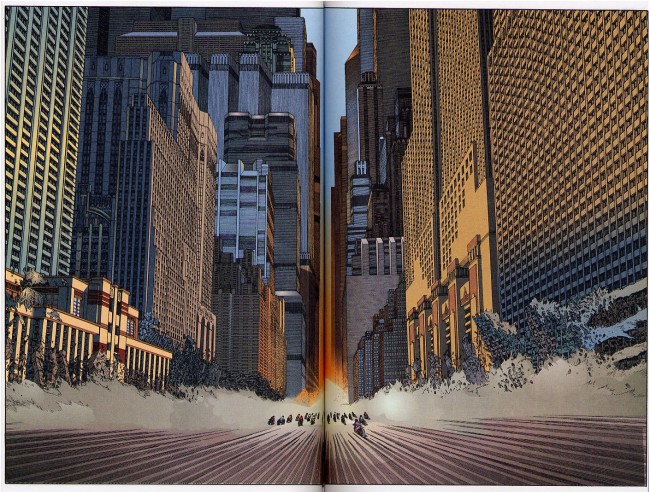
3 Formative Works: Akira
August 7th, 2010 Posted by david brothers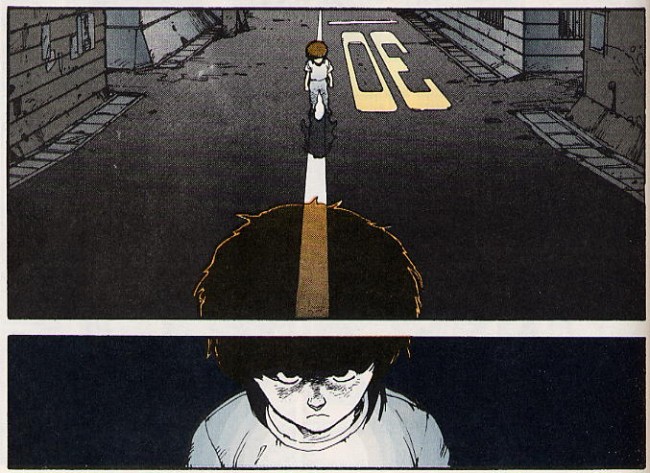
I don’t know if I could separate the film and comic versions of Katsuhiro Otomo’s Akira in my head if I tried. They’re both vastly important, but for different (and sometimes complementary) reasons. Akira was one of the first anime flicks I ever watched, and it made an indelible impression on me. I still have never seen Blade Runner, but I probably feel about Akira like other people do about Blade Runner. I had a tape I dubbed from the video store, the official cassette, the special edition DVD (with the tin), and now I own the Blu-ray, except the dub is different, so I went ahead and bootlegged a 1080p video file with the old school dub, too. I like this movie, man.
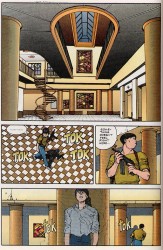
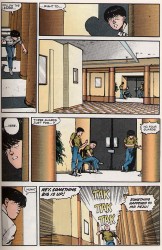
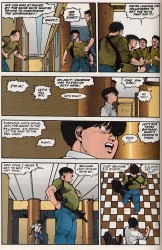
I came to the comic later, and like everything I read back then, I read it in fits and spurts. I read maybe four whole issues when I was a kid, all of them set before the big disaster struck Tokyo. They’re long gone now, but they were pretty stunning. They definitely stood alongside Sin City as being comics that were vastly better than the other comics I owned, even if I was too young to articulate why. It was a little more grown-up, a little more edgy, and Steve Oliff’s colors were amazing. I don’t think I even really knew what manga was at this point–I’d heard about Japanese comics, and my comics-reading uncle had lived in Japan so I was up on some stuff, but I didn’t really know about manga as something different from regular comics. I just knew that Akira was something special, different from the movie and possibly better.
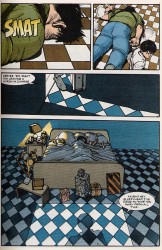
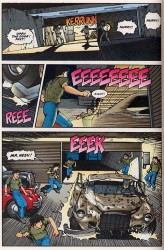
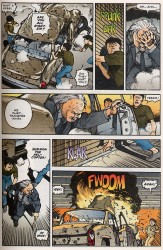
In the late ’90s, I picked up two of the hardcovers that Graphitti Designs put out. The covers are almost identical to the Dark Horse versions. The local comic shop guy was your typical comic shop douchebag, unkempt and rude, and he let the two HCs, which were limited editions and behind the glass, go for fifteen each. Today, they’re worth ten times that. I ended up with books 2 and 4, set before and after everything goes wrong. They did little to show me exactly what the series was about, because I had two sets of 400 non-consecutive pages out of a series that ran over 2000 pages, but it did just increase my fascination with the series as a whole.
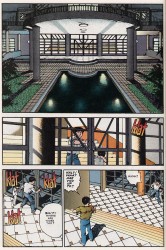
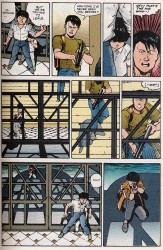
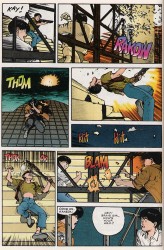
Everything was interesting. The draftsmanship, the way Tetsuo swallowed pills, the insane sex scene, the flashbacks, the ruined city… it really hit me in a way most sci-fi doesn’t. I’ve only ever had two holy grails in comics, books that I absolutely had to have at any (reasonable) price. Flex Mentallo was one, but I didn’t know that existed until what, 2005? When I got grown and could afford to buy whatever comics I wanted, Akira was the first and most important holy grail there was.
Finding more of the old Graphitti HCs proved to be almost impossible. Websites that listed them didn’t respond to emails, eBay was a joke, and you’d think that these books never existed. In 2004, Barnes & Noble issued a hardcover version of the Dark Horse volume 1, and I picked that up. It sucked that it was in black & white, but hey: 1) hardcover and 2) I had to have it. I held out hope that I would find the Graphitti versions for the rest, but eventually gave up and started buying the Dark Horse editions… right after they went mostly out of print. That’s no big deal now that Kodansha is rereleasing the series, but a few years ago, it was massively frustrating.
Finding and reading Akira in its entirety has been a quest some fifteen years in the making. I only picked up the sixth and final volume in early ’08, and that was after some serious searching. I can’t think of another series I’ve pursued off and on for that long. Scooping up the complete Sin City was easy, except for finding a copy of the old school Family Values printing. Flex Mentallo took a few eBay auctions. Akira took effort, for one reason or another.
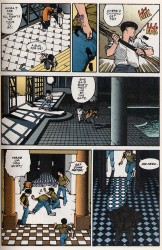
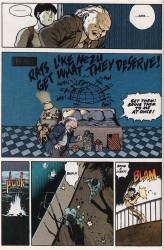
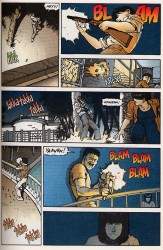
It was worth the effort, though. Akira is one of my top three favorite books, and a pitch perfect example of how to do a sprawling, huge story without screwing it all up in the end. The art is off the charts, with consistently great layouts and inventive storytelling. It’s probably akin to Cerebus, except if Cerebus was great from the beginning and if Dave Sim didn’t go insane around the middle. It works, and at some 2000 pages, it really shouldn’t work. It should be bloated and ugly and drag, but it doesn’t.
What’s interesting about the English adaptation of Akira is that it goes against conventional manga translating wisdom in a few ways. It’s both flipped and in color, already a tremendous departure from the original work. Jo Duffy’s translation was meant to be appealing to American audiences first, which allowed her a certain degree of freedom in playing with the dialogue. All of this was done with the permission and approval of Otomo and Kodansha, of course, but if you had to make a list of changes to books that manga fans don’t like, it’d probably go 1) flipped, 2) color, and 3) localization. Not to mention its trim size (or more accurately, trim sizes across the various formats) and the fact that it was a computer-colored, story-driven manga released in the early ’90s, when garishly colored, art-driven superhero comics ruled the roost. Akira, in America, shouldn’t be what it is, and yet… here we are.
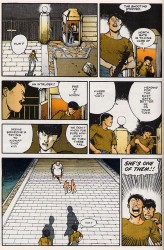
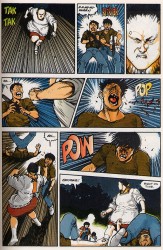
(An aside: I was at New People in Japantown when I saw a familiar logo on an unfamiliar spine. It turns out that Kodansha took Marvel/Epic’s Akira volumes, reflopped them, relettered them in Japanese, and re-released them in Japan in some very nice slipcased volumes. Every time I go in that building I am tempted to buy them. They have three or four, I think. I’m far from an expert in Japanese editions, but I’ve never heard of companies doing that before. You can see the covers here, along with some incorrect data [it’s definitely the Epic colorization]. Covers are ill, though, right? Someone talk me out of buying them.)
I haven’t talked at all about what Akira is about, have I? It doesn’t really matter. I could do that at any time, about any scene. The images in this post are from issue fourteen of the Epic run, one of the ones I distinctly remember poring over as a kid. The only thing the pages I’ve excerpted are missing is the crazy ill way Otomo would draw moving headlights, something that made it into the film and imprinted onto my mind as something awesome as a young age. (It only happens twice in this chapter, on Nezu’s front and rear lights.) But look at that atrium on akira-01.jpg, the body language on akira-02.jpg, the comedy on akira-03.jpg, the car on akira-05.jpg, the ridiculous camera shifts in akira-08.jpg (panels 7-9 make me swoon), Kay’s pose in panel three in akira-09.jpg, or the way Otomo keeps showing the windup and the effect, but not the impact, or–
pause
Akira is a triumph, one of those comics I try to reread at least once a year and fall in love with a little more each time. It’s over twenty years old, and while it has definitely aged some, it still beats the pants off a lot of things we consider quality nowadays.
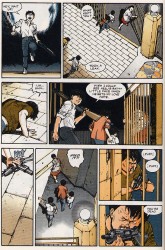
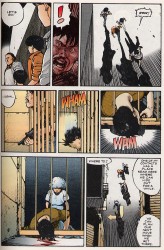
And it has the best last page in comics, hands down.
